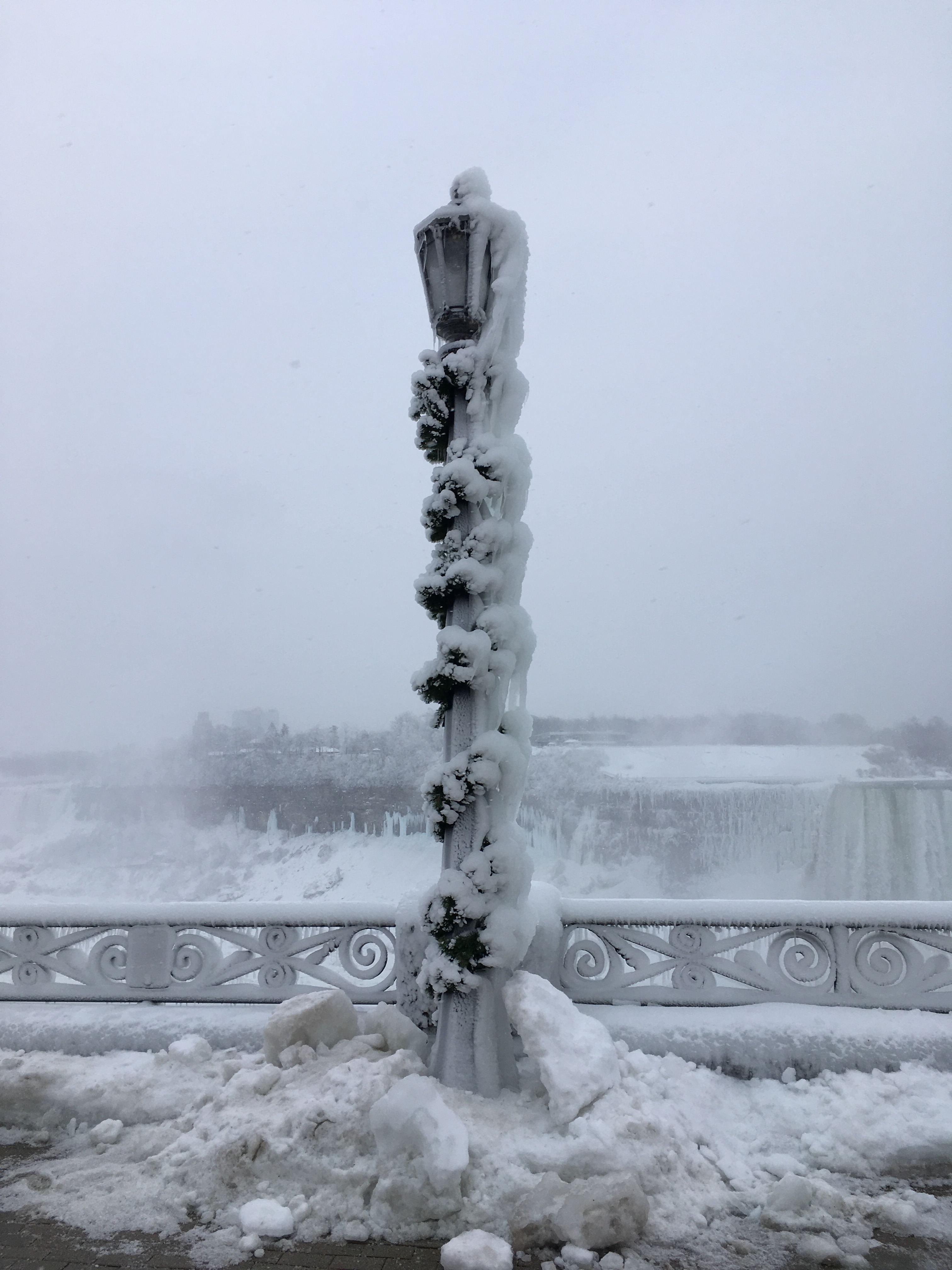Niagara Falls and ice - what's up with that?
, 4 min, 678 words
Tags: adventuring
Earlier this week, I had the lovely opportunity to visit Niagara Falls in the middle of a pretty chilly winter. I was there for a little under a day, just long enough to see the falls once from the American side at night and once from the Canadian side during the day. Both views, of course, were breathtaking.
One of my favorite parts of seeing Niagara Falls in the winter is the accumulation of frozen mist on, well, everything. The Falls generate mist at a prodigious rate (how fast?), and often the mist blows over the viewing areas. In the winter, if it gets cold enough, the mist freezes on contact. Over time this leads to truly majestic ice accumulation, like on this lamppost. Guess which way the wind usually blows!
Here is my exploration of the Falls, through questions.

Some questions
- How big are they, really? The Falls had at least 50,000 cubic feet of water flowing over them per second when I saw them, thanks to the Niagara Treaty (1950). It's more in the summer, during peak tourist season. See the treaty text for more details (article IV).
- Why do they look so green? According to Niagara Parks, the green is from rock flour and dissolved minerals (how do those create a green color?), while Niagara Frontier adds that microscopic algae called diatoms also contribute to the vibrant color.
- Is anyone generating power from them? Heck yes they are! In fact there was a time in the mid 1800s when it was possible that the Falls would be completely industrialized. Even now, two massive generating stations on the American side are going strong. Nearly 25% of New York state's energy production comes from hydroelectric sources (see energy breakdown here), an impressive feat.
- What air currents dictate whether mist is blown up from the Falls and what direction it then goes? While a lot of articles, like this one from the New York Times, discuss a couple of studies about mist production, I've had a lot of trouble finding the actual research. My impression from these articles is that nobody is totally sure what causes the mist plume to grow or shrink. It seems air currents from new highrise buildings and temperature differences between water and air are possible culprits. If you happen to find the actual studies involved, please let me know! EDIT: a short correspondence with Professor Bursik yielded this paper about mist plume behavior.
- Were the Falls explored or inhabited by Native Americans/First Nation people? Were there specific traditions surrounding them? The area around Niagara Falls was inhabited by a variety of First Nation and Native American peoples. Specific nations and tribes in the area varied over time. I wasn't able to find any specific traditions around the falls, though I'd love to learn more.
Outstanding questions
- How cold does it have to be for ice to continue to accumulate on trees/railings?
- How much mist do the Falls produce?
- Do the Canadians choose to use green sidewalk salt to match the Falls? I'm not sure what the reasoning is. My guesses include aesthetics, some ecofriendly compound for deicing, and a compound that works well at low temperatures.
- I've been told that when drawing a waterfall, you should resist the urge to draw the waterfall, instead drawing the wet rocks around that. How the heck do you draw something so expansive, and so devoid of wet rocks, as Niagara Falls?
- The trees near the Falls seem to constantly lose branches because of the weight of accumulated ice. Does this result in evolutionary pressures that make trees in the path of the mist noticeably different from their cousins outside the line of fire (line of ice?)?